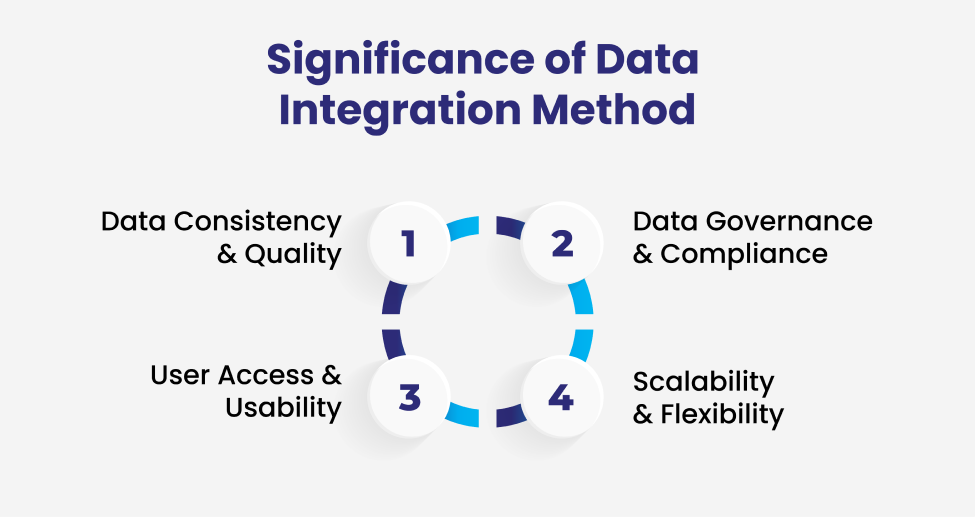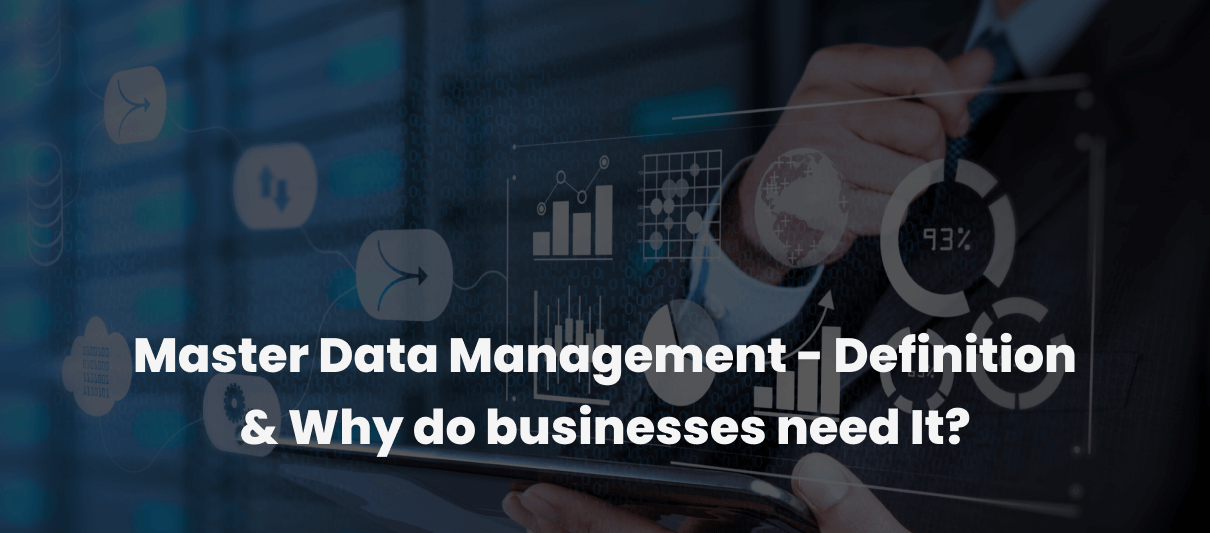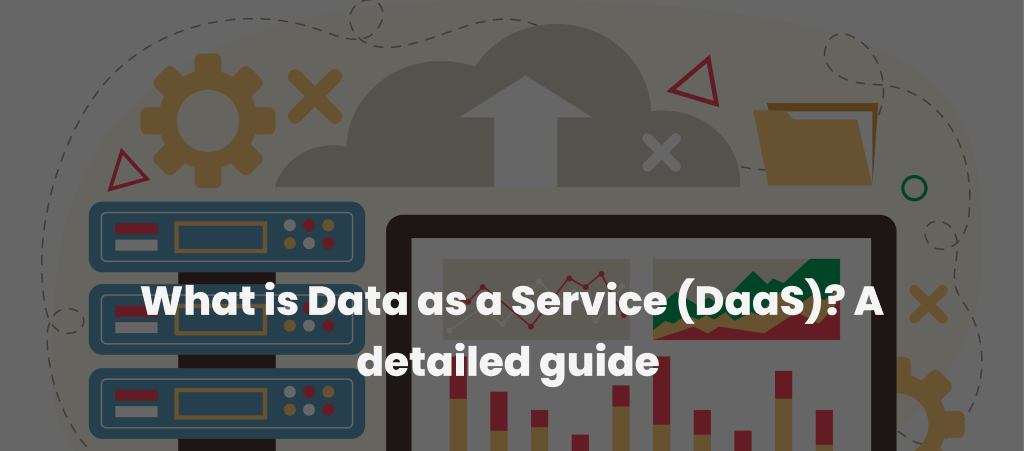Data Virtualisation vs. Traditional ETL: Which One Should Your MDM Strategy Adopt?
With large volumes of data accumulating daily, it is a never-ending challenge for businesses and organisations to protect their master data, which houses all essential information, including customer data, product details, and other financial information. With a Master Data Management (MDM) strategy, organisations can manage and govern their core business data in a single source of truth that businesses can depend on to drive actionable insights, improve operational efficiency, and for data governance. Thus, having a streamlined data integration method is the cornerstone for master data management, which ensures businesses gain access to accurate and consistent information that scales business performance and upholds compliance.
So now the real question is, what kind of data integration methods should your business opt for? Is it data virtualisation or ETL integration? Each method has its advantages, challenges, and ideal use cases, which can significantly impact your ability to create a seamless, accurate, and reliable master data environment.
This blog explores the differences, benefits, and limitations of both data virtualisation and traditional ETL, guiding you on how to choose the right approach for your MDM strategy. It also discusses SquareOne’s expertise in helping organisations identify the ideal data integration approach, ensuring a robust and effective MDM strategy tailored to meet specific business needs.
Traditional ETL - An Overview
Data Virtualisation - An Overview
Unlike traditional ETL, data virtualisation creates a virtual layer that provides a unified view of data from diverse sources, regardless of its actual location. This approach to data integration enables businesses to gain real-time access and management of data without the need to move or duplicate it. Data virtualisation’s ability to fetch data in real time rather than relying on pre-scheduled intervals enables businesses to utilise the latest data available, ensuring the decision made is relevant and up-to-date. By controlling access to multiple data sources through a single layer, data virtualisation ensures the master data is properly governed, protected, and consistent.
However, there are certain differences that need to be considered before drawing a conclusion.
Key Differences Between Traditional ETL & Data Virtualisation
Aspect | Traditional ETL | Data Virtualisation |
|---|---|---|
Data Extraction | The process is performed on a scheduled basis, creating a copy for future processing. | In this method, the data is neither disturbed nor copied. Instead, the virtualisation tool fetches data in real-time, helping businesses when required. |
Data Transformation | The transformation process also takes place in batches, ensuring the quality or consistency of data is neither compromised nor deleted. | Here, data transformation happens only on demand during query time. This way, businesses can view the original format of data as it is. |
Data Storage | The cleaned data is then loaded into a separate centralised repository from where businesses can access the data. | No loading process is involved in the data virtualisation method, because the virtual layer will extract the data directly from the source. |
Data Access | Once the ETL cycle is completed, the data is made available in batches at scheduled intervals. | The data is made live and in real-time supporting businesses to make decisions then and there. |
Data Quality Management | With the traditional ETL process, the data undergoes strict cleaning, standardisation and transformation, ensuring the data is consistent and accurate with no duplication or inaccuracies. | Whereas in the data virutualisation approach, the quality control is limited, as transformations occur on-demand and vary with query. |
Integration Complexity | As a traditional approach, the integration process is quite challenging and resource-intensive, particularly while dealing with legacy systems or the cloud. | With no need for physical data movement, the integration process is seamless and straightforward. |
Data Relevancy | With batch processing, the data is not that relevant or up to date, creating a lag or gap in decision-making. | This supports real-time decision-making, as the data is fetched directly from the source, keeping it latest and relevant. |
Scalability | Requires configuration and storage spaces to accommodate the growing volume of data | Offers high scalability options for businesses, as it does not require any separate storage space. |
Use Case Suitability | The traditional ETL approach is best suited for environments that involve stable and structured data with batch updates. | This approach supports a dynamic environment that needs real-time access to data. |
Master Data Management - An Introduction
The Significance of the Data Integration Method

Data Consistency & Quality
The data integration method plays a significant role in ensuring the cleaning, transforming, and standardising process of data from diverse sources. With the traditional ETL process, the data is cleansed and standardised thoroughly when compared to the data virtualisation approach, where on-demand transformation is done for real-time data. From minimising errors to removing duplicate data, the data integration method is in charge of high-quality data flow into the MDM system.
Data Governance & Compliance
User Access & Usability
Another most important aspect that data virtualisation helps with is the ability to access the data for users or businesses to make informed decisions, enhancing productivity and operational efficiency. In this case, data virtualisation offers more flexibility for business by pulling the latest data in real-time from diverse sources. Whereas ETL is often suited for businesses that require stable and structured data.
Scalability & Flexibility
Thus, having the right data integration method is essential for MDM strategy because it supports data of high quality, accuracy, and reliable consistency. Also, it is important to note that choosing the right data integration method that aligns with your organisational requirements empowers the business to use its data as a strategic asset.
When to Choose Traditional ETL
Having a clear idea of when to use the traditional ETL process and when to opt for the data virtualisation method will help meet every requirement of business, such as real-time access, consolidation storage, and enhanced governance. The following are the scenarios or situations that demonstrate when to use the traditional ETL method.
- Historical Analysis: For businesses dealing with customer analysis and forecasting trends, the traditional ETL method is the most appropriate one, for it supports unifying data from diverse sources to a centralised repository from where businesses can analyse the historical data and make informed decisions.
- Structured Data: Traditional ETL is effective for business environments that deal with structured or stable data, the ones from CRM, ERP, and relational databases. This is because ETL provides smooth data mapping, cleansing, and transformation before data enters the MDM system.
- Compliance & Governance: Traditional ETL is particularly beneficial for organisations with strict data governance and regulatory compliance needs, such as those in finance, healthcare, and government sectors.
When to Choose Data Virtualisation
The following are the scenarios or environments when data virtualisation is effective.
- Real-time Data Needs: For businesses like finance or stock marketing that require up-to-the-minute information, data virtualisation is the perfect solution as it helps with relevant data.
- Multiple Data Sources: Data virtualisation is well-suited for integrating data from various, distributed sources, including cloud platforms, APIs, big data systems, and on-premises databases, especially when physical integration is complex and resource-intensive.
- Cost-Efficiency: Data virtualisation is a cost-effective choice for organisations aiming to reduce data storage and infrastructure expenses, as it avoids the costs of extensive data warehousing and large-scale data movement.
Conclusion
In conclusion, deciding between traditional ETL and data virtualisation for your MDM strategy hinges on your business’s unique needs, such as compliance, governance, real-time access, and scalability. With traditional ETL, your organisation benefits from highly consistent data that meets strict security and compliance standards. Alternatively, data virtualisation offers real-time data access, supporting prompt, informed decision-making.
To identify the best-fit data integration method, professional guidance from experts like SquareOne can be invaluable. Their team will work closely with you to assess your organisation’s specific demands, ensuring you adopt the right data integration approach to protect and manage your critical master data. This data is essential, housing key information related to customers, business operations, and overall efficiency. Ultimately, a well-chosen data integration strategy will strengthen your MDM, providing reliable data as the foundation for informed decisions and sustainable growth. Ready to find the best data integration solution for your MDM strategy? Connect with SquareOne today and let the experts guide you every step of the way.













